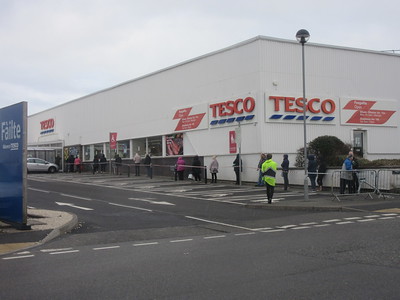Today is the third anniversary of the first lockdown in the Covid-19 pandemic. We shall all remember that period vividly, but more to the point, we shall never forget those lost to the disease. Here in the UK, some 200,000 died of coronavirus, which was not brought under control until the end of 2021, when vaccinations meant the restrictions could finally be lifted. All that was still far in the future, that strange Monday in March 2020.
No shops open, other than those deemed essential, such as supermarkets. What normally only took me 10 minutes now took me 90. Queuing outside Tesco as far back as Ferry Road. Once in the shop, keep a 2-metre distance to the customer in front. Bring a list, drawn up in sequence of items on the shelves, and don't you dare forget that item in aisle 4, because once past, you'd need to ask a member of staff to pick it up for you. No doubling back allowed. Then, a long queue for the check-out.
Masks were not yet compulsory, that came in the following July. Public transport at a virtual standstill, travel only being permitted if absolutely essential. Buses only available for essential workers, and the Thursday evening clap-a-thon for the NHS. As we have since learned, these rules were blithely ignored by those at the top of (UK) government. The deathrates skyrocketed to a frightening 1,500 a day across the UK.
Spring 2020 was very sunny, and there was ample opportunity to go out for the daily hour's exercise. It was so strange, the normally busy streets of Stornoway empty of people - something previously only seen on a Sunday. Shops closed, and hardly anybody about. The usual events of summer, such as the agricultural shows and the Hebridean Celtic Festival, were all cancelled. No visitors to the island - at all.
I have come to call the year 2020 the Year of Silence.

Remember the toilet-paper shortages? 16 March 2020

Queueing system outside Tesco, 26 March 2020

Cromwell Street, Stornoway, 3.10pm, 26 March 2020

Closed shop, Bells Road, Stornoway, 26 March 2020

An Lanntair, 2 May 2020

In praise of the NHS, 21 May 2020

A sunny but derelict South Beach carpark, 6 May 2020
In memory of all, lost to the Covid-pandemic, here in UK and around the world.



